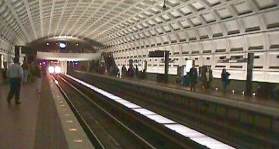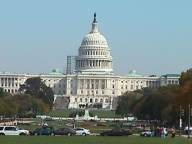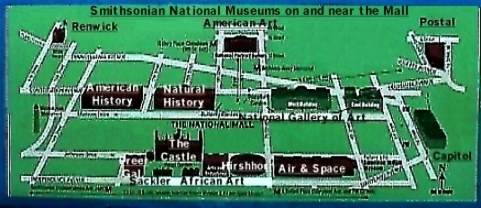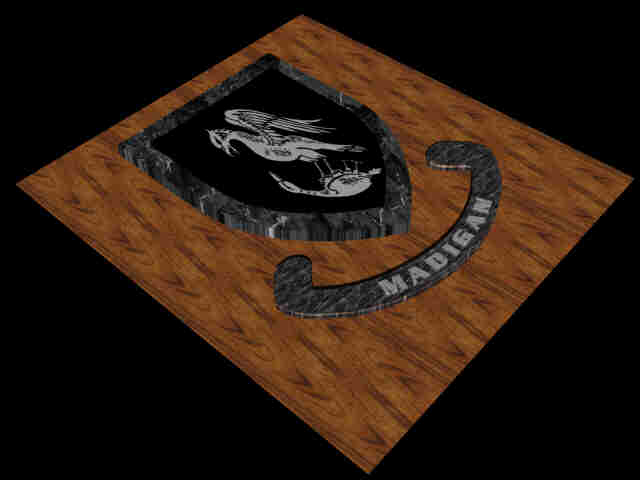Our Nation's Capitol
The Smithsonian(s)
Washington, DC.
October 23, 1999
We stayed
outside of Washington in a campground in Stafford, Virginia, called
Aquia Pines Camping Resort. Since we had been forewarned about
the problems parking in DC (by a delightful young couple of
friends,  Christina and Stefan Gerwinat) we decided to park at
one of the local "parking areas" for the metro (short
for Metrorail) and had a very nice ride into town. The metro was
very clean and everywhere we went we found employees that were
more than willing to help us with directions or anything else we
needed. Some of the Metro was above ground but when it got into
the heart of Washington it went below ground. Of course, the
first thing we saw when we exited the Metro station was the
beautiful Capital Building.
Christina and Stefan Gerwinat) we decided to park at
one of the local "parking areas" for the metro (short
for Metrorail) and had a very nice ride into town. The metro was
very clean and everywhere we went we found employees that were
more than willing to help us with directions or anything else we
needed. Some of the Metro was above ground but when it got into
the heart of Washington it went below ground. Of course, the
first thing we saw when we exited the Metro station was the
beautiful Capital Building.  When we had asked our friends about where "The
Smithsonian" was, they chuckled a bit and asked "Which
one?" I guess the confusion must have shown in our faces
because they proceeded to tell us that Smithsonian (which started
out as one building many years ago) is now a complex of 15
museums and/or galleries. The original Smithsonian building is
called "The Castle." And that's exactly what it looks
like. Needless to say, since we had decided we would spend one
day touring the Smithsonian we only got to see a very small
portion of what they had to offer. If you would like to take a
peek ahead of time and see what is being offered currently (they
have a number of traveling exhibits that change periodically)
check out their website at Smithsonian Information.
When we had asked our friends about where "The
Smithsonian" was, they chuckled a bit and asked "Which
one?" I guess the confusion must have shown in our faces
because they proceeded to tell us that Smithsonian (which started
out as one building many years ago) is now a complex of 15
museums and/or galleries. The original Smithsonian building is
called "The Castle." And that's exactly what it looks
like. Needless to say, since we had decided we would spend one
day touring the Smithsonian we only got to see a very small
portion of what they had to offer. If you would like to take a
peek ahead of time and see what is being offered currently (they
have a number of traveling exhibits that change periodically)
check out their website at Smithsonian Information.
I will list the various museums and galleries, then I will give you a brief overview of what we saw.

There are nine
Smithsonian museums and galleries which are located on the
National Mall between the Washington Monument and the Capitol.
These include: the original "Castle", the American
History Museum, the Natural History Museum, the Freer Gallery,
the Sackler Gallery, the African Art Museum, the Museum of Arts
and Industries, the Hirshhorn Museum, and the Air and Space
Museum, in addition to several lovely gardens. A three-level
underground complex houses two museums and the S. Dillon Ripley
Center, which includes the International Gallery, offices and
classrooms. Five other museums and the Zoo are elsewhere in
Washington. The Cooper-Hewitt National Design Museum and the
National Museum of the American Indian are located in New York
City. 
Of these we chose to see the Castle, the Museum of Natural History, the Arts & Industries Building and some of the Gardens. Deciding what to see when you get there, is one of the hardest things, aside from having your walking shoes on to get everywhere. One of the things that was interesting to me was who started the Smithsonian Museum which has since become the repository for so many American treasures. The Smithsonian was established in 1846 with funds bequeathed to the United States by James Smithson, an English scientist, "for the increase and diffusion of knowledge." It seems rather ironic, to me, that a foreigner would think more of America's scientific treasures than we did, but fortunately this was the case with the Smithsonian.
